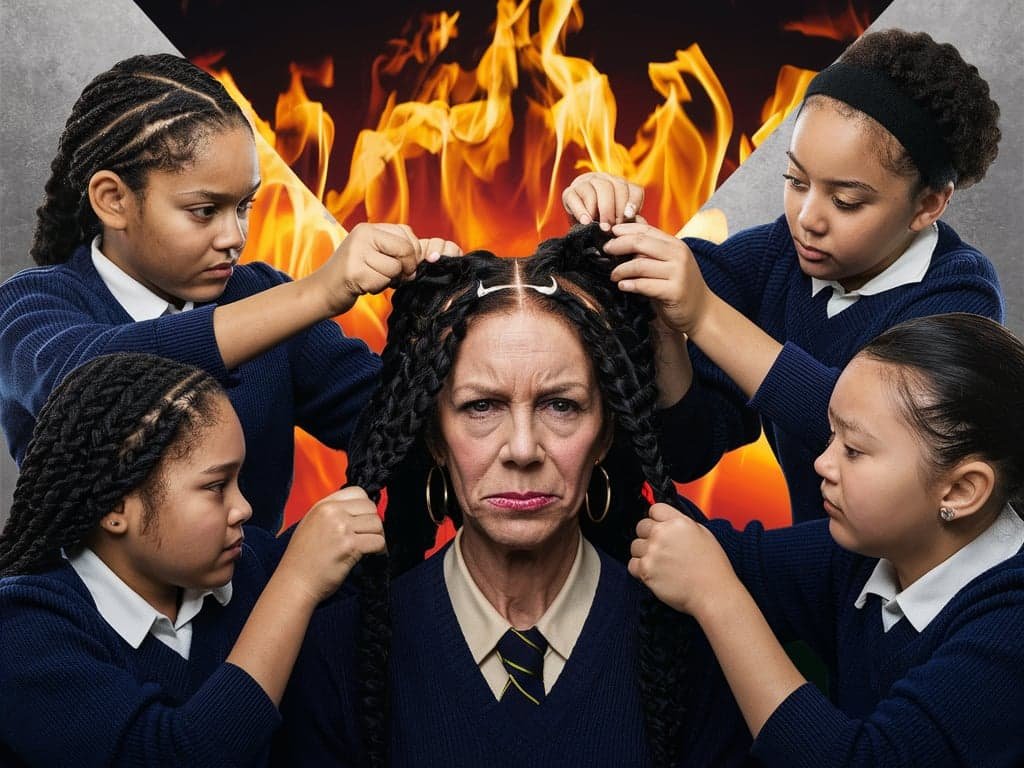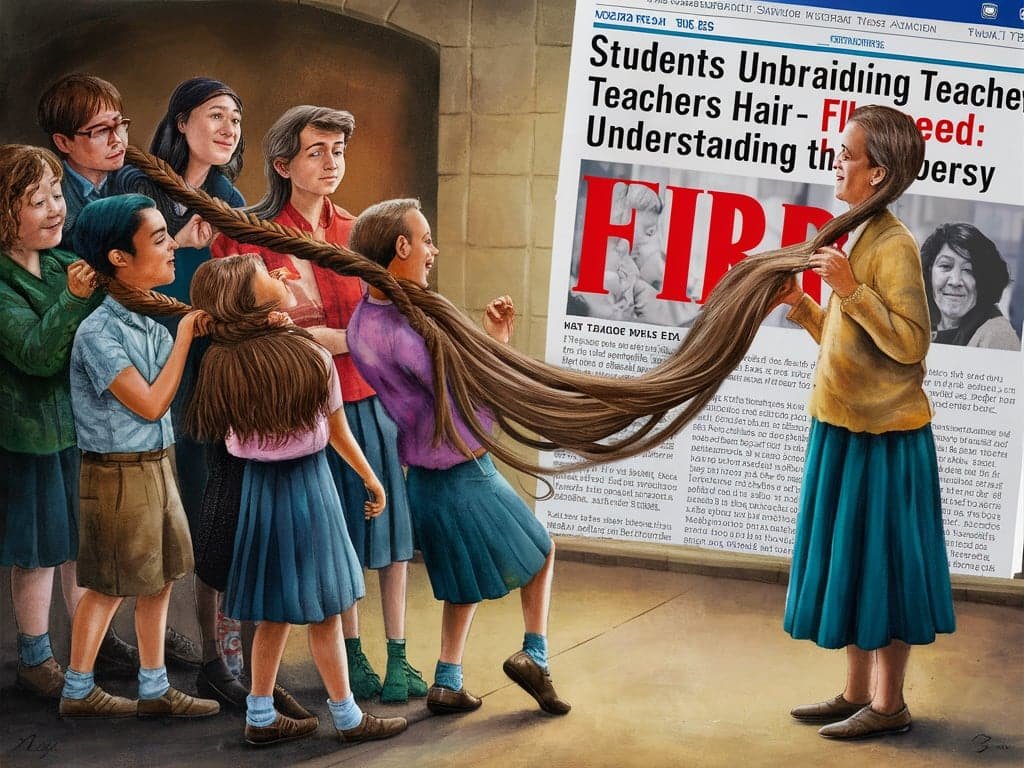In recent years, incidents involving students engaging in inappropriate behavior towards teachers have surfaced, highlighting critical issues regarding respect and professional boundaries within educational environments. One such incident involves students unbraiding their teachers hair, which led to the students being fired or disciplined. This article delves into the details of such cases, exploring the implications, responses, and broader context of this controversial topic.
The Incident: An Overview
The incident of students unbraiding a teachers hair, which led to their dismissal or disciplinary action, involves a complex interplay of cultural norms, professional boundaries, and respect within educational settings. Here’s a closer look at the context and consequences of such actions.
Incident Description
In several cases, students have engaged in the act of unbraiding their teacher’s hair as a form of prank or in an attempt to disrupt the class. This behavior, while seemingly benign to some, can have serious implications for the teacher and the overall classroom environment. The act of unbraiding a teacher’s hair without consent is considered a breach of personal boundaries and respect.
Reactions and Consequences
Upon discovery of such incidents, schools and educational institutions typically respond with disciplinary measures. The students involved may face various consequences, including suspension, expulsion, or other forms of reprimand. The severity of the punishment often depends on the nature of the incident and the school’s policies regarding student behavior and professional conduct.
Professional Boundaries and Respect in Education
Understanding Professional Boundaries
Professional boundaries in education are crucial for maintaining a respectful and productive learning environment. Teachers are expected to maintain a professional demeanor and uphold standards that foster mutual respect between students and educators. Actions that infringe upon a teacher’s personal space or dignity are considered violations of these boundaries.
Importance of Respect
Respect is fundamental in any educational setting. Teachers, as authority figures, deserve to be treated with the utmost respect by their students. Inappropriate behavior, such as unbraiding a teacher’s hair, undermines this respect and can disrupt the educational environment. Respectful behavior promotes a positive and conducive learning atmosphere, essential for both teaching and learning.
Case Studies and Examples

Case Study 1: The Middle School Incident
In a notable case, a group of middle school students was reported for unbraiding their teacher’s hair during a classroom activity. The teacher, who had long braids, was visibly distressed by the incident. The school administration responded by implementing immediate disciplinary actions, which included suspensions for the students involved. The incident sparked a broader discussion about appropriate behavior and boundaries in schools.
Case Study 2: High School Prank Gone Wrong
In another instance, high school students decided to unbraid their teacher’s hair as part of a prank. The teacher, who was known for her friendly demeanor, took the incident as a violation of her personal space. The school took the matter seriously, resulting in the students facing expulsion. This case highlighted the fine line between harmless fun and disrespectful behavior in educational settings.
Legal and Ethical Considerations
Legal Implications
The legal implications of students unbraiding a teachers hair can vary depending on jurisdiction and the specific circumstances of the incident. While such actions might not always result in legal action, they can lead to significant disciplinary measures within the school. Legal issues may arise if the behavior is deemed harassment or if it leads to a hostile environment for the teacher.
Ethical Concerns
From an ethical standpoint, unbraiding a teacher’s hair without consent raises questions about respect and personal boundaries. Ethical considerations in education emphasize the importance of treating teachers with dignity and ensuring that their personal space is respected. Educators have the right to a professional environment free from inappropriate or disruptive behavior.
Table: Key Points in Students Unbraiding Teachers Hair Incident
| Aspect | Details |
|---|---|
| Incident Type | Students unbraiding a teachers hair |
| Common Reactions | Suspension, expulsion, or other disciplinary measures |
| Professional Impact | Disruption of classroom environment, violation of personal space and respect |
| Legal Implications | Varies by jurisdiction; potential for harassment claims or hostile environment concerns |
| Ethical Concerns | Importance of respecting professional boundaries and personal space |
Addressing the Issue: Steps for Improvement

Educating Students
Education plays a vital role in preventing inappropriate behavior. Schools should incorporate lessons on respect and boundaries as part of their curriculum. Understanding the impact of their actions on others can help students make better choices and foster a more respectful school environment.
Training for Educators
Teachers and school staff should receive training on how to handle situations involving inappropriate behavior. This includes strategies for setting clear boundaries, addressing incidents effectively, and maintaining a positive learning atmosphere.
Implementing Policies
Schools should have clear policies in place regarding student behavior and professional conduct. These policies should outline acceptable behavior, the consequences of violations, and procedures for addressing issues that arise. Consistent enforcement of these policies helps maintain a respectful and orderly educational environment.
Conclusion
The issue of students unbraiding their teachers hair and the resulting disciplinary actions highlight important aspects of respect, boundaries, and professionalism in education. While such incidents can be distressing, they also serve as a reminder of the need for clear communication, education, and policies that uphold respect for all individuals within the school environment.
Understanding and addressing these issues ensures that educational institutions remain safe and respectful spaces where teachers and students can engage positively and productively. By fostering an environment of mutual respect and professionalism, schools can prevent incidents of inappropriate behavior and support the overall well-being of both educators and students.
4o mini




